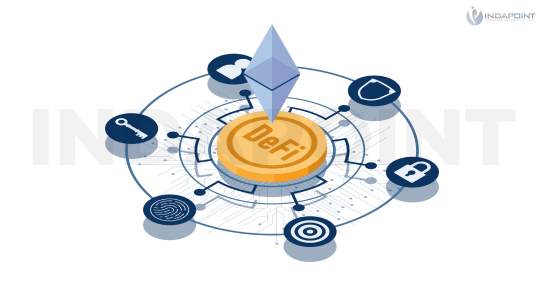The Future of NFT
February 1, 2022

There has been a lot of conjecture in the past about the future of NFT. However, as we’ve seen in recent months, the market has performed admirably.
Cryptocurrencies are now taking advantage of this concept by providing new ways for users to invest in a variety of intangible assets such as stocks, bonds, and other securities without really owning them (i.e., clearing them through fiat money).
NFTs are emphasis on visual intangible assets that were created with decentralisation in mind. Users can transmit cryptocurrency tokens that represent shares or bonds instead of actual shares or bonds, rather than using real-world currencies like dollars or euros. This enables persons who don’t have access to existing counterparties to sell them.What is the Best Way to Invest in NFT Tokens?
Investing in NFTs is the same as investing in a business. The most effective way to do so is to invest through a security token exchange or STO.
Before investing, the first thing you should do is study the company’s whitepaper. If they’ve included information about how their NFT will be used within their platform or app, there should be an explanation of how the utility token works. If there isn’t, ask questions to find out if there’s a plan for future use of their token.
The second thing you should look into is whether the company has a business model and plan. This will give you an idea of what the company intends to do with its tokens after the ICO is completed. It’s probably not worth investing if they don’t have any actual plans or ambitions for their tokens.
Do your due research on the team members and advisors engaged with the project once you’ve determined that it’s a legitimate project.
NFT’s Current and Future in a Variety of Fields
Here are some of the most common applications of NFT in various fields:
Gaming

NFT tokens are utilised for in-app purchases in most gaming apps.
CryptoKitties, the most established and popular blockchain game, is a perfect illustration of how NFTs may be employed in gaming. As previously said, the rarer an object (in this case, CryptoKitty), the more expensive it becomes. Because of the item’s rarity, an NFT that is hard to come by or is on a platform with restricted availability will constantly increase in value over time. This increase in value is because there is no longer an equal playing field for anybody who wants to buy the object.
We should expect a lot of changes in the future because the blockchain industry is still quite young. This includes alterations to the way things are done now. It’s safe to assume that the NFT market will continue to expand and that it may even change the face of gaming as we know it. And who knows what might happen? Maybe in a few years, your investment will be worth a fortune.
Real Estate

Most money is invested in real estate. NFTs can be applied to real estate in several ways. It can be used, for starters, to make real estate ownership more transparent.
You can, for example, place the ownership of a piece of land or property on a blockchain and allow others to see it. NFTs will benefit both purchasers and sellers of land and properties since they will avoid paying large transactional and administrative fees.
NFTs can also be employed in the real estate industry’s management. Smart contracts, for example, can be used to manage rental concerns like rent collection and deposit returns by renters at the end of their renting time.
NFTs can also be utilised to develop a new type of crowdfunding that allows investors to profit from their investments in real estate projects such as house construction and rental flats.
NFTs will, however, play a significant role in the real estate industry. The blockchain allows us to connect people who are looking to buy or sell the property without the need for a third party or broker. This reduces transaction costs and saves time while maintaining confidence.
Music

One of the most significant relationships in the music industry is between artists and their followers. The rise of internet music streaming services like Spotify and YouTube has made it easier than ever for music enthusiasts to listen to their favourite artists for free.
As a result, musicians have been battling to monetize their content and maintain their careers.
Artists that issue NFT tokens might generate new revenue streams by offering limited-edition products that can only be purchased with the artist’s token—fans are enticed to buy these tokens because they have real value.
As a result, the artist and fan have a mutually beneficial connection in which the artist may create more new art and maintain their skill without relying on record labels or other third parties for assistance. As a result, NFT is a fantastic way for the music industry to receive the direct compensation they deserve rather than having middlemen gobble up their profits.
Hyper-realistic Virtual reality

A person’s whole collection of NFTs would be able to travel with them via Hyperrealistic VR experiences in this future blockchain-powered world. Anyone with access to the internet might see these digital assets, and they could be used as part of an immersive gaming experience.
We might even see digital NFTs that can be utilised as both physical and virtual goods one day. Imagine wearing your favourite sports team’s shirt while playing a card game with your friends! This not only creates an interactive and immersive experience but also raises the value of the physical thing (the jersey) and its longevity and usability.
In the world of AR and VR, the NFT marketplace will be the most essential innovation. Users will be able to sell and buy virtual objects for their avatars, such as weapons and tools. In a virtual environment, NFT may represent a thing that you can pick up and take around with you — and possibly sell for real money at a later date.
Defi

Decentralized financial applications (Defi) are a relatively recent concept. Defi programmes can be used to deposit, lend, borrow, trade, and more with bitcoin (and potentially fiat). Decentralized finance is sometimes misunderstood as “decentralised banking.” It’s not; it’s more like Lending Club or Prosper, for example.
NFTs with a composite structure. The ability to generate composite NFTs is the most important feature of an NFT in Defi (C-NFT). Fractional ownership is analogous to composite NFTs.
This paradigm has the advantage of allowing smaller groups of people to jointly own physical assets more securely than previously achievable with centralised structures. Wrapping Up
Wrapping Up
NFTs allow for the creation of previously unthinkable business models. They allow artists to sell digital goods without having to worry about hosting fees, payment processing failures, and other issues. They let game creators sell in-game virtual products. They can also help bloggers sell digital subscriptions without worrying about credit card processors or chargebacks.
Because they collect a tiny transaction fee (typically between 0.5 per cent and 3 per cent every time an item is sold, the proprietor of a marketplace can directly earn from selling NFTs. The higher the market’s success, the more valuable the NFT gets. This gives marketplace operators an incentive to build their communities by giving buyers and sellers the greatest possible experience.




